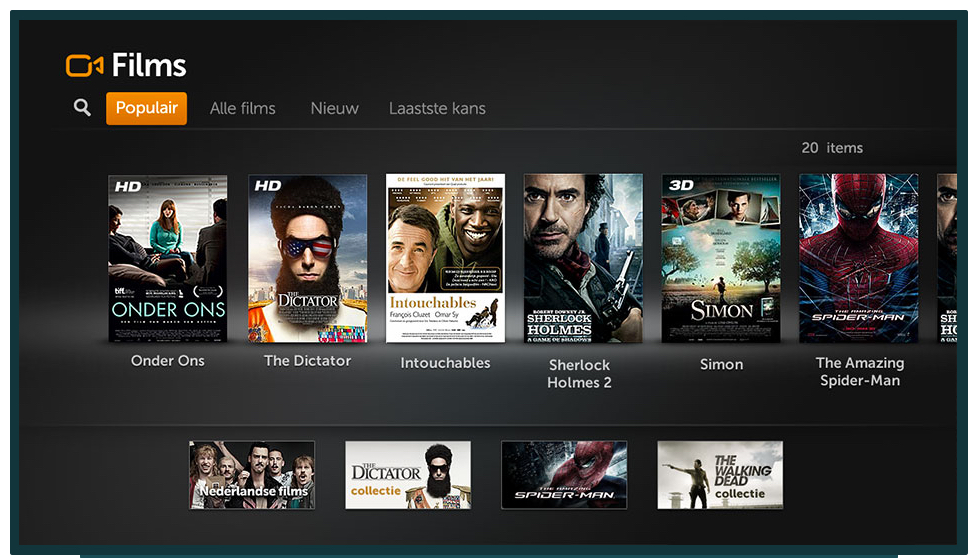The challenge: different digital receivers, one user experience
Over 2.5 million households in The Netherlands use Ziggo’s digital TV. A digital receiver in your living room translates the signal allowing you to watch digital TV. Over the years, customers have been using many different receivers to watch Ziggo's digital TV. Each type of receiver has its own hardware, user interface and remote control.
Ziggo has been offering more and more interactive services. Like movies on-demand or watching ‘Uitzending Gemist’. As Ziggo's customers use many different receivers, their user experience varies. This made it hard for Ziggo to consistently promote and communicate its services.
Supporting many different types of digital receivers is a tough task. Ziggo has to maintain a complex infrastructure to provide the right content to each device. To fix issues and imrpove performance, the software of all those devices had to be updated frequently.
To fix all these issues, Ziggo picked an advanced solution developed by ActiveVideo Networks. It uses a technology where the user interface is generated on a server which is turned into a video streamed to the digital receivers. Every receiver gets the same stream and sends the exact same user interface to the TV. This guarantees Ziggo's customers all get the same user experience. And maintenance is much easier as software only has to be updated in one place.
Developing a user interface which is streamed to a TV has different challenges compared to applications running on the digital receivers themselves. For us it was the challenge to develop a streaming web app that reacts quickly and smoothly with all digital receivers and remote controls.

The solution: a streaming web app
The web application runs in the cloud, in a so-called ‘headless browser’. The images generated by that browser, are streamed - through the internet - to the digital receiver of the customer, just like a normal digital video channel. When the user pushes a button on the remote, the signal is sent to the server where its used to update the user interface.
Each user has its own session and its own personal user interface on the server. Since the user interface is streamed we optimised graphics and transitions to minimise bandwidth usage and ensure the screen updates smoothly and quickly on every TV with any digital receiver.

